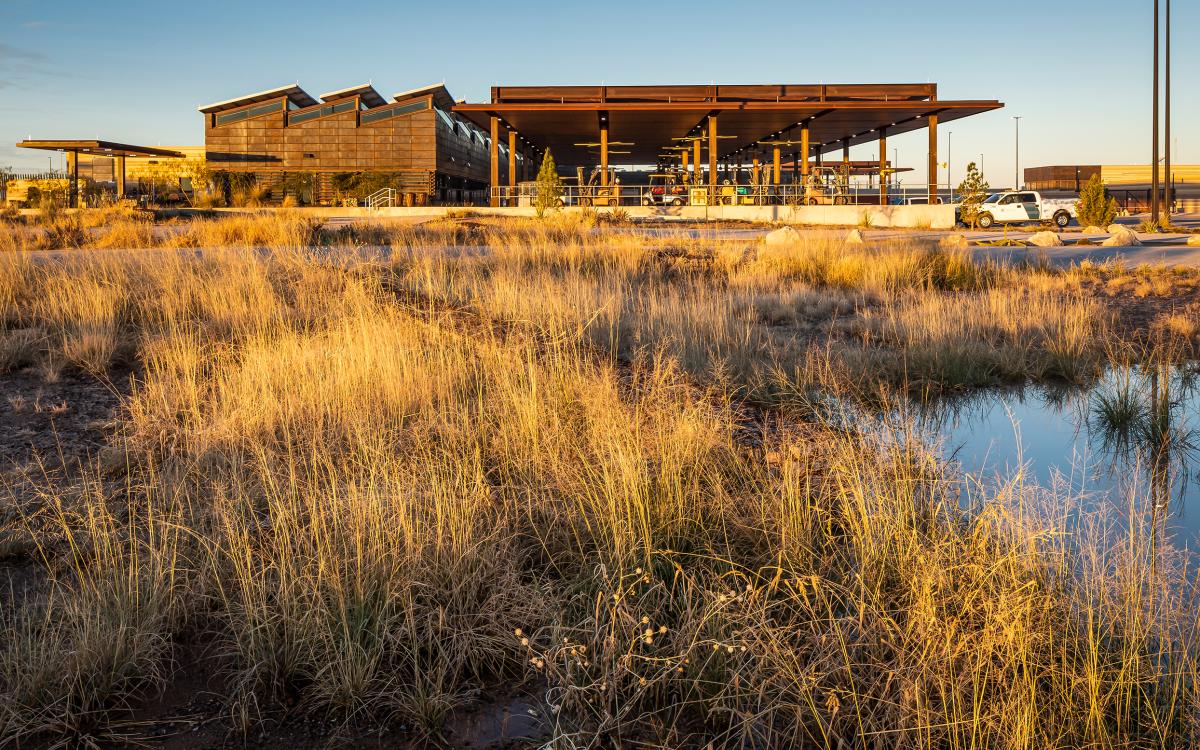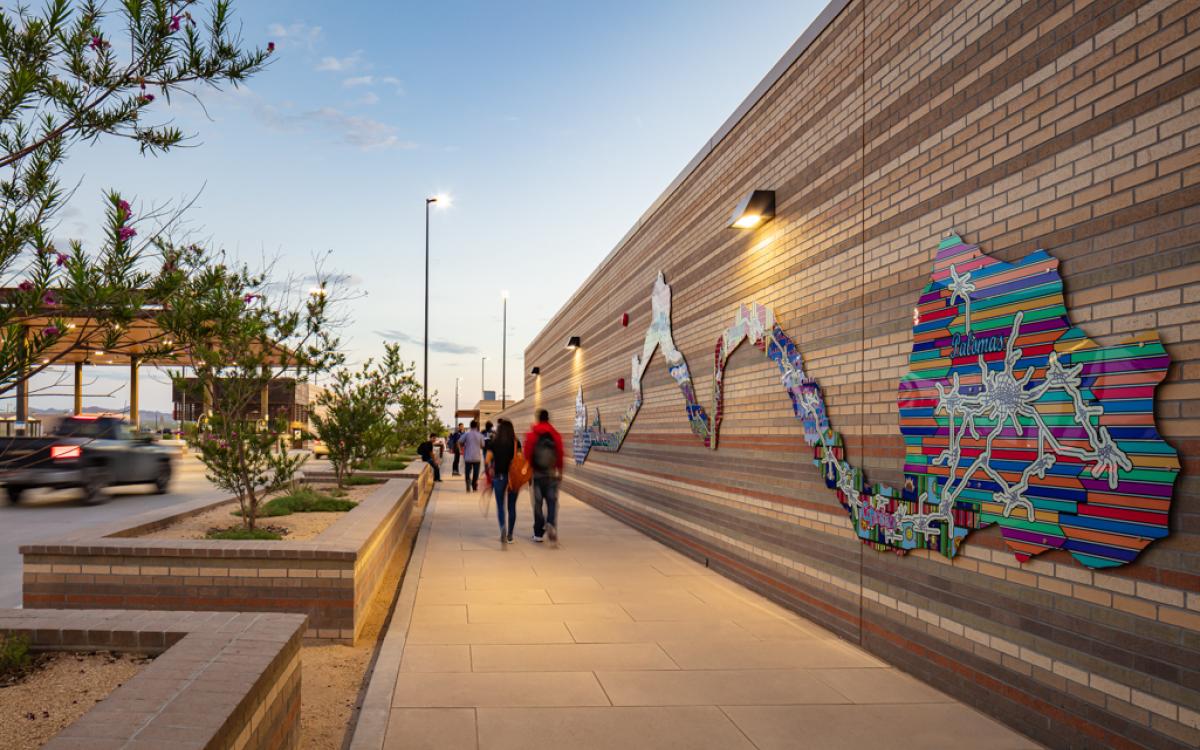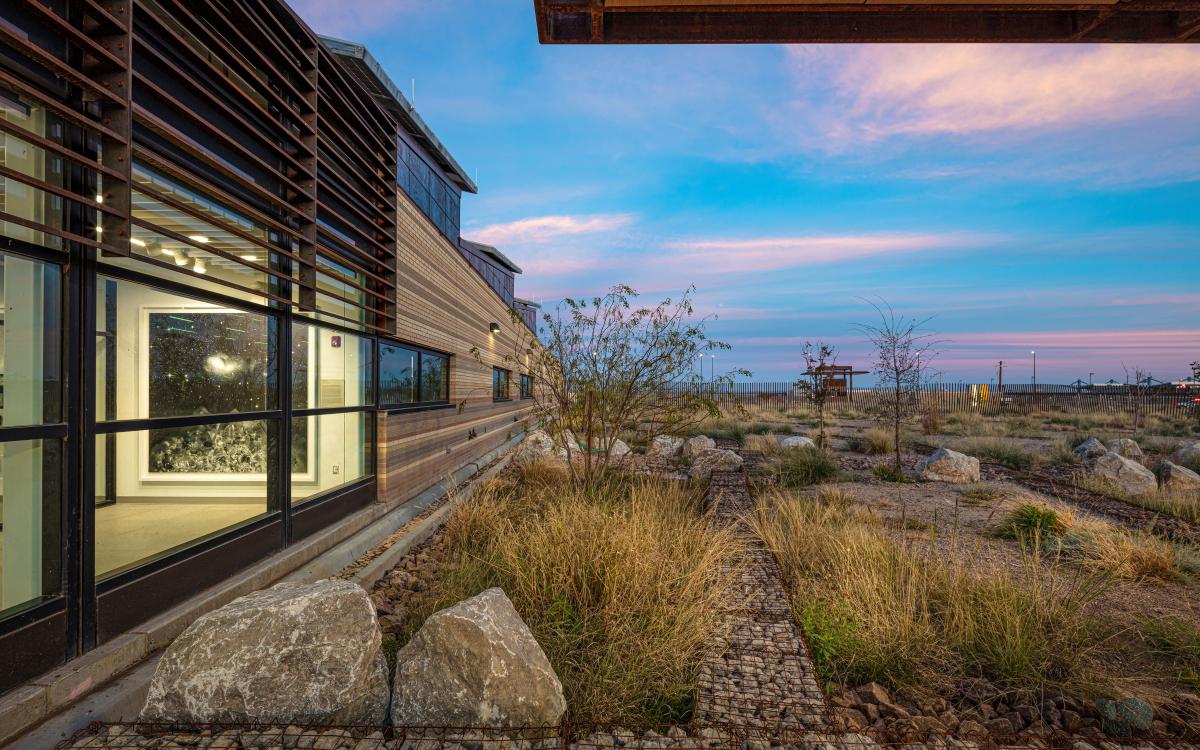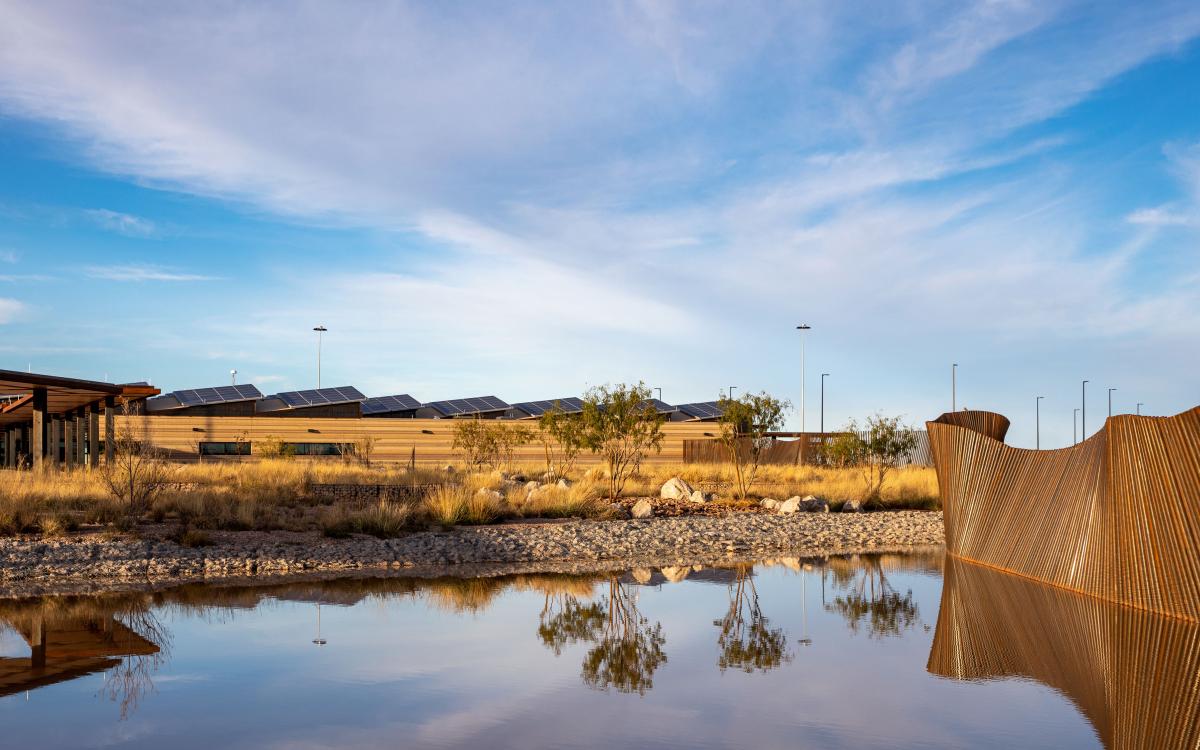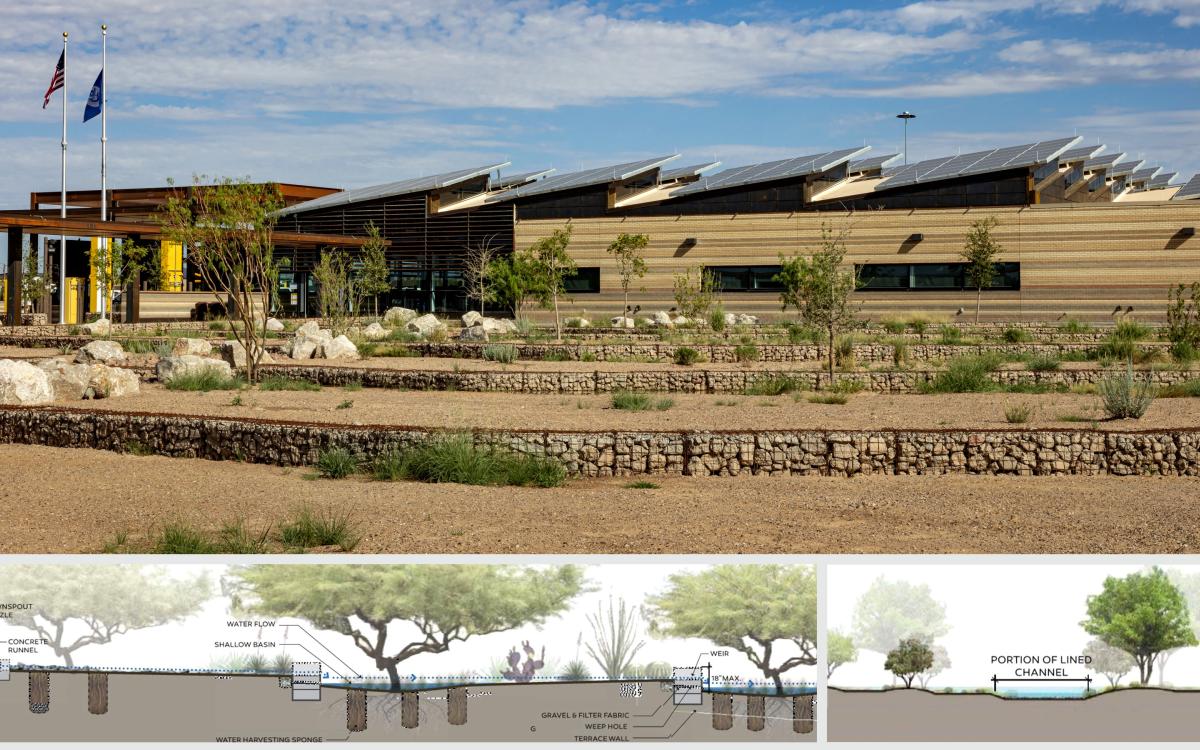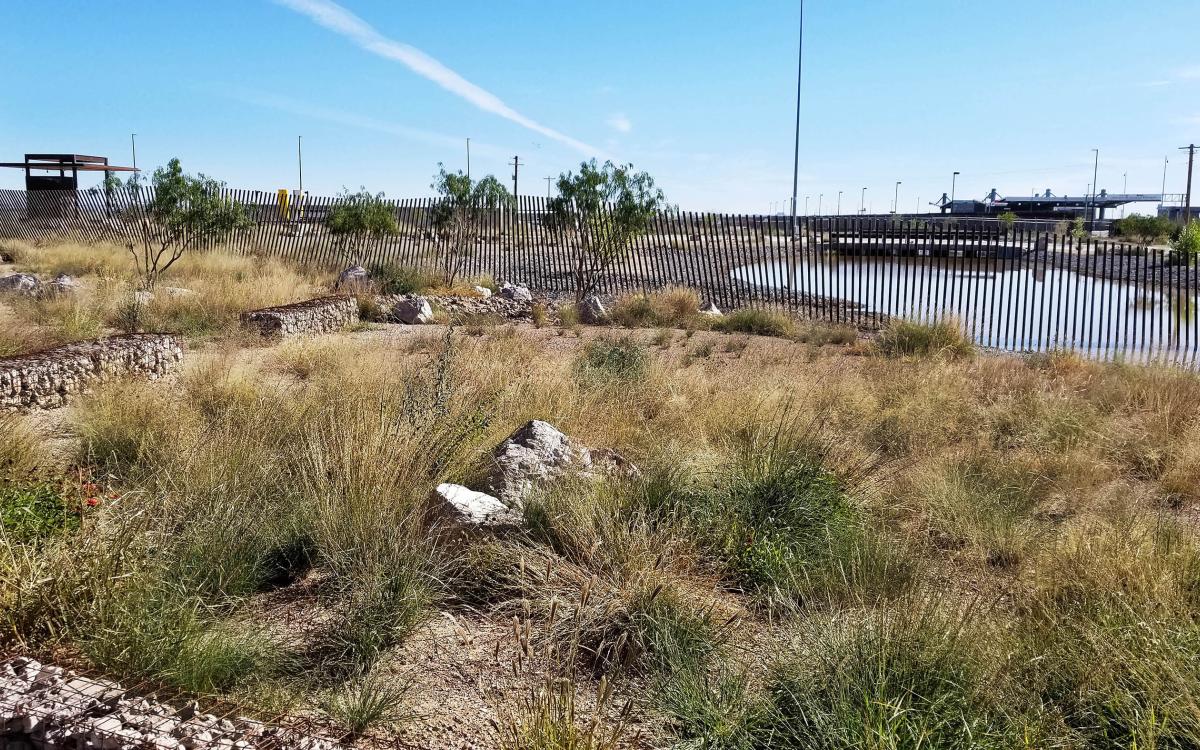Columbus, NM
United States
The Columbus US Land Port of Entry Expansion is the border crossing facility just south of Columbus, New Mexico, and north of Puerto Palomas, Mexico. It is New Mexico’s only 24-hour border crossing facility. The original Port was constructed in 1989 and covered 16.79 acres. The expansion project restarted in 2014 and was needed to accommodate increasing vehicle and pedestrian traffic. The expansion includes the previously developed Port site and an additional 11.86 acres of previously undeveloped Chihuahuan Desert Grassland. The Port experiences heavy daily pedestrian traffic, primarily from students who cross the border to attend school in Columbus and Deming, NM, as well as private vehicle traffic and commercial traffic. In 2018, the Port saw 277,000 pedestrian crossings and 353,000 passenger vehicle crossings.
The safe and orderly movement of people and vehicles is the primary function of the Port facility. Beyond this function, the landscape design for the Port provides a shaded passage for pedestrians, an oasis-like patio for employees of the Port, and a striking arid landscape for vehicular travelers. The landscape is inspired by natural typologies that tell the story of water’s transformational power. These typologies include desert washes and riparian landscapes, water harvesting terraces, and restored Chihuahuan desert grasslands and scrublands.
The water harvesting features integrated throughout the site direct stormwater runoff from roofs and pavement to landscaped areas, which controls flooding and sends 2-3 million gallons of water a year to plants. A state-of-the-art irrigation system maximizes efficient use of potable water. After an establishment period, only select trees and shrubs will receive irrigation. These measures are expected to bring outdoor water use to 97% below the EPA WaterSense baseline value. Trees and shrubs are located primarily along pedestrian walkways to provide essential shade. High Solar Reflectance (SRI) materials for all roofs and paved surfaces further mitigate surface temperatures. Careful soil testing, soil amendments, and plant selection resulted in the successful re-vegetation of nearly 550,000 square feet of Chihuahuan desert grassland, which is more than existed on site before construction. Over 50 species of native plants used in the landscape design create habitat and showcase desert flora.
“With every project, our firm’s goal is to create a resilient landscape that is sensitive to its role in the ecosystem and culture in which it exists. The SITES rating system gives us the opportunity to expand on these goals, confirm they are achieved, and then to quantify the benefits for the owner and the public,” explained Aaron Zahm, Principal Landscape Architect, MRWM Landscape Architects.

